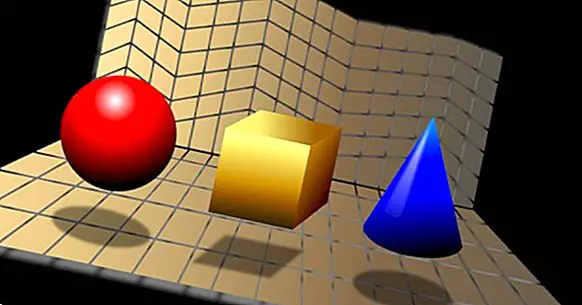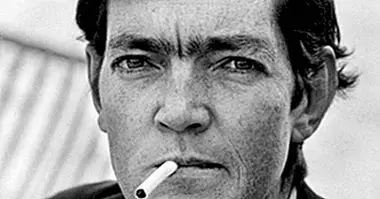The Problem of Molyneux: a curious mental experiment
In the year 1688, the Irish scientist and politician William Molyneux sent a letter to the well-known philosopher John Locke in which he raised a question that aroused the interest of the entire scientific community of the time. Is about a thought experiment known as the Molyneux Problem , and still today arouses interest.
Throughout this article we will talk about this question debated and discussed both in the field of medicine and in that of philosophy and that still today generates many disagreements between researchers and thinkers.
- Related article: "How are Psychology and Philosophy alike?"
What is the Molyneux Problem?
Throughout his career, Molyneux was especially interested in the mysteries of optics and the psychology of sight. The main reason for this is that his own wife lost her sight when she was still very young.
The main question posed by the scientist was whether a person born blind that over time has learned to distinguish and name different objects by touch , would be able to recognize them with the view if at some point in his life he recovered it.
The background that led Molyneux to formulate such a question came inspired by a paper by the philosopher John Locke in which he made a distinction between the ideas or concepts that we acquired through a single sense and those for which we need more than one type of perception. .
Since Molyneux was a great admirer is this English intellectual, he decided to send his thoughts by mail ... which, at first, did not get an answer. However, two years later, with the recent friendship between these two thinkers, Locke decided to answer, also, with great enthusiasm.
This included the Molyneux Problem within his work, enabling that reflection to reach a much wider audience .
Locke exemplified this question in the following way: a man blind from birth, learns to distinguish by touch a cube and a sphere made with the same materials and with the same size. Suppose now that this man regains his sight and you put both objects in front of you, could you then distinguish them and name them without touching them before, only with sight?
The Molyneux Problem at that time attracted the attention of numerous philosophers, most of whom have become references today. Among them were Berkeley, Leibniz, William James and Voltaire himself.
The first discussions of the time
The first reactions of the philosophers of the time denied before anything the possibility that a person blind from birth could acquire sight, reason why they considered the Molyneux Problem as a kind of mental challenge that could only be solved by reason.
They all agreed that the sensations perceived by the senses of sight and touch differ from each other, but they managed to establish an agreement about how they were related. Some of them, like Berkeley, thought that this relationship was arbitrary and could only be based on experience.
However, some determined that this relationship was necessary and based on innate knowledge, while others, like Molyneux and Locke themselves, thought that this relationship was necessary and learned by experience.
Once the opinions and thoughts of each and every one of these philosophers were gathered, it was seen that all those that belonged to the empiricist current of the philosophy of the time , like Molyneux, Locke and Berkeley, responded in a negative way: the blind man would not be able to associate what he was seeing, on the one hand, to what he had once touched, on the other. In the opposite direction, those who followed rationalist positions tended to give affirmative answers, so there was no way to achieve a unanimous solution.
A part of the philosophers thought that a person deprived of the sense of sight from birth could respond directly at the time he could observe the objects. However, the rest felt that the person would need to make use of his memory and his reason, and that he should even be able to observe all the sides of the objects walking around him.
- Maybe you're interested: "The 11 parts of the eye and its functions"
What do the studies say?
In spite of the impossibility to carry out scientific studies that could solve the Problem of Molyneux, in 1728, the English anatomist William Cheselden published the case of a child with congenital blindness I had seen after a cataract operation.
Throughout this case it is stated that when the child could see for the first time, he was not able to recognize, by sight, the shape of things, and that he could not differentiate between different objects either.
Some philosophers, among them Voltaire, Camper or Berkeley considered that the observations of the English doctor were obvious and irrefutable, thus confirming the hypothesis that a blind person recovering his sight is not able to differentiate objects until he learns to see.
However, others were skeptical about these tests. They considered that it was possible that the child could not have made valid value judgments because his eyes did not work correctly yet and that it was necessary to give him a little time to recover. Others, moreover, pointed out that the boy's intelligence could also influence the validity of his answers.
Modern approaches to the mental experiment
Throughout the nineteenth century, all kinds of stories and studies on cataract patients who tried to shed some light on the Molyneux Problem were published. As expected, results of all kinds appeared , some in favor of the results of Cheselden and others against. In addition, these cases were impossible to compare, since the pre and post operative circumstances were quite different. As a consequence, the Molyneux Problem was debated very frequently, without reaching any agreement on the solution of this.
As for the problem of Molyneux in the twentieth century, it focused on historical reviews and biographies of those philosophers who analyzed it and proposed solutions for it. Over the years, this enigma has come to cover all kinds of scientific fields such as psychology, ophthalmology, neurophysiology and even in mathematics and art.
In 1985, with the incorporation of new technologies in the field of health, another variation was proposed to the Molyneux Problem. This questioned whether the visual cortex of a patient with congenital blindness could be electrically stimulated in a manner in which the patient perceived a pattern of light flashes in the form of a cube or sphere . However, even with these methods, a sure answer to the question has not been established.
The problem that could never be solved
We are pretty sure that at no time was Molyneux aware of the commotion that his question would cause throughout history. In this sense, it can be concluded that the Molyneux Problem is one of the most fruitful and productive mental experiments proposed throughout the history of philosophy, which still wrapped in the same mystery as when Molyneux raised it in 1688 .



















